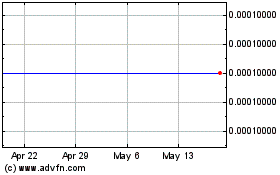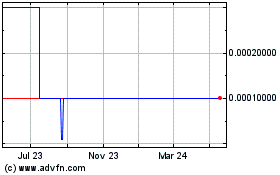GeckoSystems Intl. Corp. (PINKSHEETS: GOSY)
(http://www.geckosystems.com/) -- announced today their progress
regarding the Company's partnership with ZMP Inc. of Japan.
GeckoSystems is a dynamic leader in the emerging mobile robotics
industry revolutionizing their development and usage with "Mobile
Robot Solutions for Safety, Security and Service™."
In November of 2011 GeckoSystems International Corp.
(PINKSHEETS: GOSY) and ZMP of Japan announced a Memorandum of
Understanding (MOU) and their intent to collaborate on mobile
robotics projects.
http://www.geckosystems.com/investors/press_releases/20111123_ZMP_MOU.php
The two companies share a common goal: "to assist people in
living a safe and comfortable life, focusing on the elderly and
disabled."
Last month, GeckoSystems sent their GeckoMotorController™
software source code to ZMP engineers for evaluation. This code was
migrated from the CareBot/BaseBot platform to the Imasen wheelchair
last year demonstrating the economic feasibility of the world's
first commercially viable robotic "collision proof" wheelchair.
Since receiving this code ZMP has begun examining suitable projects
to lead off the partnership.
GeckoSystems' engineers have now ruggedized the electronics and
cabling of a new depth camera enabled BaseBot™ prototype to be
shipped to ZMP in Japan. ZMP has an outstanding record of
innovation and co-operation within the robotics community. ZMP was
born out of the Kitano Symbiotic Systems Project, which was
sponsored by the Japanese government to push technology forward.
ZMP collaborates regularly with Japanese universities and
technological institutions and provides robotic teaching tools
The new BaseBot prototype will demonstrate how multiple, layered
GeckoSavants achieve point-to-point navigation while avoiding
dynamic or static obstacles in the path of the BaseBot. This is a
very important and beneficial behavior. It can safely be used to
augment traditional navigation systems and enables mobile robots to
engage in tasks like errand running and patrolling efficiently thus
rendering mapping, line following, or remote operator control
unnecessary.
In this latest configuration the Kinect depth cameras used in
the prototype were changed from a vertical orientation to a
horizontal one. GeckoImager™ was successfully adapted to the new
operating parameters, eliminating the "rabbit ear" appearance of
the initial CareBot™ prototype. This new configuration will make it
easier to design more esthetically appealing products.
GeckoSystems is also researching customized optical systems and
motor designs to replace some off the shelf components used in the
wheelchair and BaseBot prototypes. Custom software in the depth
cameras will enhance the performance of GeckoImager and lower
manufacturing costs. A custom motor design will increase battery
life of finished products by fully utilizing the "constant energy"
capabilities of the GeckoMotorController.
http://www.geckosystems.com/low_level/geckoimager.php
http://www.geckosystems.com/low_level/geckomotor.php
"GeckoSystems is pleased that its IP rights to the technologies
used in projects developed in cooperation with ZMP will be under
the supervision of ZMP's associates, Hirayama & Company,
Patent, Design & Trademark Attorneys. We continue to expect
technology licensing revenues to precede sales of actual products
for the ROI our stockholders expect and deserve," observed R.
Martin Spencer, President/CEO, GeckoSystems Intl. Corp.
For additional information about ZMP see our website:
http://www.geckosystems.com/partners/about_zmp.php
Names of other ZMP partners that are more familiar to US
investors include NEC Electronics, Hewlett-Packard, Renesas
Electronics, JVC, Kenwood, and Microsoft.
About GeckoSystems Intl. Corp.:
GeckoSystems has been developing innovative robotic technology
for over fourteen years. It is CEO Martin Spencer's dream to make
people's lives better through robotic technology.
GeckoSystems, Star Wars™ Technology
http://www.youtube.com/watch?v=VYwQBUXXc3g
Although the company's primary focus has been an elder care
robot, the CareBot™, AI (artificial intelligence) software
technology developed for this project is being marketed
internationally. The company believes many devices in use today can
be improved through the use of its AI navigation software system.
The company expects their "collision proof" wheelchair and an
upgrade for existing wheelchairs will be on the market sometime in
2012.
GeckoSystems' Mobile Robot Solutions Improve
Wheelchair Safety
http://www.geckosystems.com/markets/wheelchair.php
The company has successfully completed Alpha trials of its
CareBot personal assistance robot for the elderly. It was tested in
home care settings and received enthusiastic support from both
caregivers and care receivers. The company believes that the
CareBot will increase the safety and well being of its elderly
charges while decreasing stress on the caregiver and the
family.
GeckoSystems is preparing for Beta testing of the CareBot prior
to full-scale production and marketing. The CareBot has recently
incorporated Microsoft Kinect motion sensors that will result in a
significant cost reduction. Footage from the
CareBot Elder Care Alpha Trial
http://www.youtube.com/watch?v=xxK46chfP6A
Above, the CareBot demonstrates static and dynamic obstacle
avoidance as it backs in and out of a narrow and cluttered alley.
Unlike most of the developmental stage robots backed by major
corporations, there is no joystick control or programmed path.
GeckoNav™ uses Artificial Intelligence (AI) to create three low
levels of obstacle avoidance: reactive, proactive, and
contemplative. Subsumptive AI behavior enables the CareBot to reach
its target destination after engaging in obstacle avoidance.
GeckoSystems plans to provide robotic products for many consumer
and commercial applications including security, defense and
healthcare.
Kinect Enabled Personal Robot video:
http://www.youtube.com/watch?v=kn93BS44Das
About the CareBot™:
The CareBot has proven to be ideal for the Personal Assistance
market (care for children, chronically ill, and the elderly) which
has been chronicled in articles from Psychology Today
(http://www.psychologytoday.com/blog/adventures-in-old-age/200906/the-robots-have-dawned-meet-the-carebot)
and subject-related blogs
(http://cgmasi.com/eyeontechnology/2009/06/personal-robots-to-monitor-elderly-vital-signs.html).
In this market, mobile service robots (MSRs) serve as a cost
effective alternative to nursing assistance or assistance living
residency. The estimated annual savings total near the tens of
thousands of dollars.
The CareBot has multiple layers of safety precautions. These
safeguards are enabled three ways: mechanical, electronic, and
using AI computer software.
- The robot is very stable and difficult to tip over since nearly
seventy percent of its weight is less than eight inches above the
floor and sits low between large, ten-inch diameter wheels. The
wheels are wide and soft enough such that if the robot did go over
a child's arm, for example, it would not break the skin or any
bones.
- Multiple layers of sensors are fused to provide a safety
umbrella to enable actionable situational awareness. Going outward
from the center of the CareBot is the GeckoTactileShroud™, which
detects where on its shroud it has been bumped by people or
animals. The GeckoImager™ detects virtually everything in the front
and to the sides of this fully autonomous mobile robot up to sixty
inches. Obstacles more distant are detected by twin ultrasonic
rangefinders.
- The advanced AI navigation software, GeckoNav™, takes in the
hundreds of sensor readings per second and using its high level
situational awareness, consistently avoids unforeseen static and/or
dynamic obstacles for safe movements.
Like an automobile, the CareBot is made from steel, aluminum,
plastic and electronics, but with up to 20 times the amount of
software running. It has an aluminum frame, plastic shroud, two
independently driven wheels, multiple sensor systems,
microprocessors and several onboard computers connected by a local
area network (LAN). The microprocessors directly interact with the
sensor systems and transmit data to the onboard computers.
The onboard computers each run independent, highly specialized
cooperative/subsumptive artificial intelligence (AI) software
programs, GeckoSavants, which interact to complete tasks in a
timely, intelligent and common sense manner. GeckoSuper™,
GeckoNav™, GeckoChat™, GeckoScheduler™ and GeckoTrak™ are primary,
high level GeckoSavants. GeckoNav is responsible for maneuvering,
avoiding dynamic and/or static obstacles, seeking waypoints and
patrolling.
GeckoChat is responsible for interaction with the care-receiver
such as answering questions, assisting with daily routines and
reminders, and responding to other verbal commands. GeckoTrak,
which is mostly transparent to the user, enables the CareBot to
maintain proximity to the care-receiver using sensor fusion. The
CareBot is a new type of Internet appliance, a personal assistant
life support robot, which is accessible for remote video/audio
monitoring and telepresence.
Research
At the time of founding, over 14 years ago, GeckoSystems did
extensive primary market research to determine the demographic
profile of the early adopters of the then proposed product line.
Subsequent to, and based on that original market research, they
have assembled numerous focus groups to evaluate the fit of the
CareBot™ personal robot into the participant's lives and their
expected usage. The Company has also frequently employed the Delphi
market research methodology by contacting and interviewing senior
executives, practitioners and researchers knowledgeable in the area
of elder care. Using this factual basis of internally performed
primary and secondary market research, and third-party research is
the statistical substance for the Company's sales forecasts.
Not surprisingly, the scientific statistical analysis applied
revealed that elderly over 65 living alone in metropolitan areas
with broadband Internet available and sufficient household incomes
to support the increased costs were identified as those most likely
to adopt initially. Due to the high cost of assisted living,
nursing homes, etc. the payback for a CareBot is expected to be
only seven to nine months while keeping elderly care receivers
independent, in their own long time homes, and living longer due to
the comfort and safety of more frequent attention from their loved
ones.
The Projected Consumer Market Size In Dollars
For Cost Effective, Utilitarian, Multitasking Eldercare Personal
Robots:
-----------------------
Year Market Size
-----------------------
2013 $74 billion
-----------------------
2014 $77 billion
-----------------------
2015 $80 billion
-----------------------
2016 $83.3 billion
-----------------------
2017 $86.6 billion
-----------------------
Estimated Market Penetrations and Projected
Sales:
--------------------------------------
Year Percentage Projected Sales
--------------------------------------
2013 0.06% $22 million
--------------------------------------
2014 0.03% $44 million
--------------------------------------
2015 0.22% $176 million
--------------------------------------
2016 0.53% $440.2 million
--------------------------------------
2017 0.81% $704.3 million
--------------------------------------
Source: U.S. Census Bureau; GeckoSystems
The Company expects these sales despite -- and perhaps because
of -- the present recession due to pent up demand for significant
cost reduction in eldercare expenses. The foregoing forecasts do
not include sales in non-metropolitan areas; elderly couples over
65 (only elderly living alone are in these forecasts); those
chronically ill -- regardless of age -- or elderly living with
their adult children.
The Company's "mobile robot solutions for safety, security and
service" are appropriate not only for the consumer, but also
professional healthcare, commercial security and defense markets.
Professional healthcare require cost effective, timely errand
running, portable telemedicine, etc. Homeland Security requires
cost effective mobile robots to patrol and monitor public venues
for weapons and WMD detection. Military users desire the
elimination of the "man in the loop" to enable unmanned ground and
air vehicles to not require constant human control and/or
intervention.
GeckoSystems stock is quoted in the U.S. over-the-counter (OTC)
markets, on the Pink OTC Current Information tier, under the ticker
symbol GOSY.
Telephone: Main number: 1-866-CAREBOT (227-3268) International:
+1 678-413-9236 Fax: +1 678-413-9247
Source: GeckoSystems Intl. Corp.
Safe Harbor:
Statements regarding financial matters in this press release
other than historical facts are "forward-looking statements" within
the meaning of Section 27A of the Securities Act of 1933, Section
21E of the Securities Exchange Act of 1934, and as that term is
defined in the Private Securities Litigation Reform Act of 1995.
The Company intends that such statements about the Company's future
expectations, including future revenues and earnings, technology
efficacy and all other forward-looking statements be subject to the
Safe Harbors created thereby. The Company is a development stage
firm that continues to be dependent upon outside capital to sustain
its existence. Since these statements (future operational results
and sales) involve risks and uncertainties and are subject to
change at any time, the Company's actual results may differ
materially from expected results.
GeckoSystems Intl. Corp. Main number: 1-866-CAREBOT (227-3268)
International: +1 678-413-9236 Fax: +1 678-413-9247
Geckosystems (CE) (USOTC:GOSY)
Historical Stock Chart
From Feb 2025 to Mar 2025

Geckosystems (CE) (USOTC:GOSY)
Historical Stock Chart
From Mar 2024 to Mar 2025
